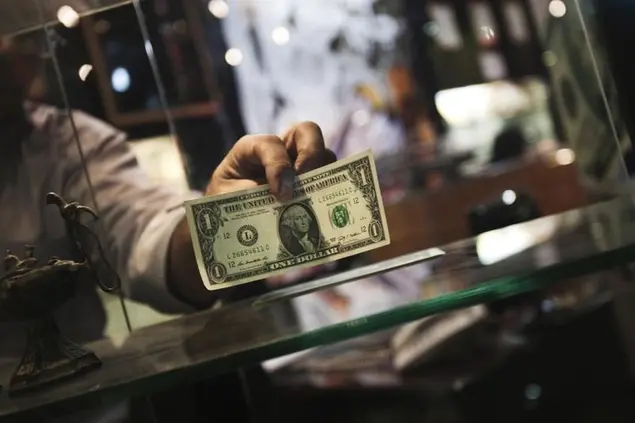PHOTO
NEW YORK - While U.S. stocks fell on Wednesday after Gary Cohn resigned as the White House’s top economic adviser, it’s the dollar that offers the best gauge of President Donald Trump’s performance. It has dropped nearly 10 percent against major currencies since he took office. That’s not a vote of confidence.
The greenback has fallen by 14 percent against the euro since January 2017, and erased almost half the gains notched up against major currencies in Barack Obama’s second term. Trump himself tends to tout a rising stock market as validation of his leadership – but in dollar terms, funds tracking stock markets including France, Singapore and China have all outperformed the U.S. on his watch.
By some yardsticks, the dollar should be strengthening. The Federal Reserve has tightened monetary policy, raising U.S. interest rates relative to those in Europe. The president’s tax cuts, signed into law in December, were designed to make the United States more attractive for investment and draw back $2 trillion in corporate wealth stashed overseas.
The foreign exchange market is signaling instead that international investors want greater exposure to Europe and emerging markets, which are at an earlier stage in their economic recoveries. American tax and spending policies may push the national deficit past $1 trillion in the fiscal year starting October 1, so it may take higher rates and an even cheaper dollar to lure overseas buyers for Treasury securities. Moreover, Trump’s antagonism of key allies, most recently with steel and aluminum tariffs, sows doubt about U.S. leadership.
The irony is that a weak dollar could serve Trump’s trade purposes more effectively than tariffs. Two years ago when the dollar was climbing, the Federal Reserve estimated that a 10 percent appreciation would cut exports and boost imports, depressing economic growth by 1.3 percentage points after two years. Recent GDP data and January trade figures released on Wednesday have largely borne out that estimate.
The dollar’s 10 percent depreciation under Trump should have an opposite effect, reducing the trade deficit and boosting growth and inflation. But investors need to maintain confidence in the U.S. economy, or a currency adjustment can turn into a destabilizing slide. That’s where erratic policy, and uncertainty over where the president will now get his economic counsel, pose the greatest risk.
CONTEXT NEWS
- Share prices on U.S. markets declined on March 7 after President Donald Trump’s chief economic adviser, Gary Cohn, said he would resign.
- The Standard & Poor’s 500 index was down 0.8 percent at 2,707 at 1:00 p.m. EST. The dollar was virtually unchanged at about $1.24 to the euro while the yield on the U.S. Treasury’s benchmark 10-year note dipped by less than two-hundredths of a percentage point to 2.86 percent.
- The Commerce Department on March 7 reported that the U.S. ran a deficit in goods and services trade of $56.6 billion in January, a figure 16.2 percent greater than the deficit in January 2017. It was the biggest monthly deficit since October 2008.
(Editing by John Foley and Ben Kellerman)
© Reuters News 2018
